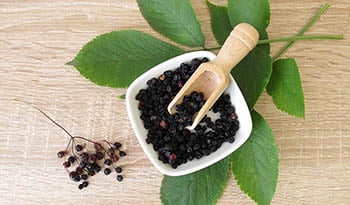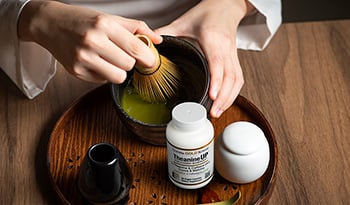The Benefits of Green Lipped Mussel
DISCLAIMER:This blog does not intend to provide diagnosis...
- In this article:
- Asthma
- Osteoarthritis
- Rheumatoid Arthritis
- Muscle Aches
- ADHD

Green-lipped mussel (GLM), also known as New Zealand mussel (Perna canaliculus), is a common shellfish which the indigenous New Zealanders, the Maori, have dove for and used it medicinally for hundreds of years. The Maori people who live near the coast have fewer arthritis symptoms than those Maori and Europeans who live inland—green-lipped mussel is believed to be a big reason why.
Mechanism of Action
An active ingredient in GLM is furan fatty acids (F-acids). These are natural—but rare and very potent—antioxidants. F-acids are fatty acids frequently found in algae may explain their anti-inflammatory properties and be one of the main reason GLM is beneficial. (Another of GLM’s active ingredients lyprinol, a lipid extract, has properties similar to other omega-3 polyunsaturated fatty acids, which may help, too.)
Furan fatty acids are omega-3 fatty acids, like those in fish oil, which inhibit 5'-lipoxygenase and cyclo-oxygenase pathways, similar to anti-inflammatory medications, but without the side effects. The biochemical pathways blocked are responsible for the production of leukotrienes and prostaglandins, both chemicals which cause inflammation.
For those scientifically inclined, this explains why GLM may be a useful tool for asthma, osteoarthritis, and other inflammatory conditions such as rheumatoid arthritis. GLM also has a beneficial effect on the gut microbiome.
Green Lipped Mussel is a Prebiotic
There are many health benefits to prebiotics. A functional food or supplement consumed by beneficial gut bacteria, probiotics help optimize the gut microbiome. According to studies, GLM acts as a nutrient for beneficial gut bacteria, which when consumed, encourages these healthy bacteria to produce short-chain fatty acids (SCFAs), substances which exert numerous beneficial effects throughout the body. This improved state helps the body achieve balance, or homeostasis, allowing the body to function at optimal levels and reduce systemic inflammation.
Asthma
Asthma is a reversible inflammatory lung disease that occurs when the muscles surrounding the lung tissues constrict. During an asthma attack, it is difficult to breathe.
Worldwide, 300 million people are affected with asthma while almost 250,000 people die from the condition each year. During an asthma attack, a person may experience symptoms like wheezing, coughing, and shortness of breath. Certain triggers, along with respiratory infections or, sometimes, allergies to pollen or pet dander, can bring on an attack. Obesity, defined in those with a body mass index of 30 or more, doubles a person’s risk for developing asthma.
There is also a type of asthma known as exercise-induced asthma (EIA), which occurs during physical activity. Those who have this form of asthma frequently need to use their medications before or during exercise in order to breathe easily. There are natural approaches to asthma one can take, and GLM is one that some find useful.
GLM can be helpful in reducing asthma symptoms, according to a 2002 study. Further, according to a 2013 study, GLM could be helpful in reducing wheezing and shortness of breath, allowing those afflicted a reduced need for their rescue inhalers. If you are on medications, consult with your physician prior to stopping any medications.
Osteoarthritis
Osteoarthritis usually results from general “wear and tear” of the joints. It happens due to the destruction of cartilage, which acts as a cushion that covers the bone. Early signs of osteoarthritis may begin when an individual is around 40 years old and can progress as one ages. The joints can be tender but are rarely swollen.
Joint trauma, at any age, can also lead to osteoarthritis in the affected joint. When my son Joshua was in the sixth grade, he broke his elbow playing basketball. He underwent surgery to have a pin placed, so the bone could be put back in place. At age 20, he has a mild form of arthritis in his elbow joint. This is common for many who have ever had joint-related trauma. The pain and stiffness are frequently worse during cold weather, when achiness may increase.
A 2000 study showed GLM’s anti-inflammatory effects in those with arthritis, and overall safety when compared to NSAIDs.
A 2008 study compared lyprinol, an extract from GLM, to naproxen and olive oil. Using rodents with arthritis, researchers showed the GLM extract was better at reducing inflammation. A 2012 study of 80 patients with osteoarthritis, over a 12-week period, did not show a significant reduction in arthritis-related pain using a standardized pain scale, but researchers did note that those on the GLM used less acetaminophen (paracetamol), suggesting they had slightly less pain. A 2018 study also demonstrated GLM’s benefit in reducing osteoarthritis pain. I have also come across reports of GLM being given to dogs with arthritis. The reports have been favorable showing dogs feel better when taking this anti-inflammatory. It appears that both humans, and our aged pets, can both benefit from nature’s anti-inflammatories.
Rheumatoid Arthritis
Rheumatoid arthritis is the result of an autoimmune condition in which the immune system attacks the lining of the joints. This results in the destruction of the cartilage and can occur at any age. There is even a form called juvenile rheumatoid arthritis (JRA), which as the name suggests, can affect children. It begins over the course of a few weeks or months with morning stiffness usually persisting for more than an hour. Many patients will have associated intestinal issues and, overall, may feel fatigued and unwell.
Due to GLM’s anti-inflammatory effect, it has been proposed in studies that this supplement can be beneficial in reducing inflammation in those with rheumatoid arthritis. A 2000 case study reported on a patient with rheumatoid arthritis who benefited from GLM supplementation, while a 2007 study in BMC Complementary and Alternative Medicine suggested that GLM could be a useful supplement in those with rheumatoid arthritis. To date, the amount of studies is limited and definite benefit cannot be suggested until more research is done. There is no evidence of harm.
Muscle Aches
Muscle aches are a common symptom of those who participate in athletics, routine exercise and in those who work performing manual labor. Frequently, one will take anti-inflammatory medications or even muscle relaxers. However, side effects such as stomach discomfort, peptic ulcer disease and drowsiness limit their use. Many prefer natural alternatives.
While magnesium is a decent option for muscle spasms, GLM can be considered to help muscle pain according to a 2015 study. A 2013 study demonstrated that long-distance runners who took a green lipped mussel supplement had reduced muscle pain compared to those who did not. This is a good supplement to add to your cabinet if you are physically active.
ADHD
Attention deficit hyperactivity disorder (ADHD) is a common ailment affecting children, teens, and even adults. Current therapy focuses on behavioral therapy, diet changes, and when that is not sufficient prescription medication. Many parents are concerned about drug therapy as stimulants are often the class of medications chosen. These medications have side effects and can elevate blood pressure, suppress appetite, and sometimes affect personality in unwanted ways.
Natural therapies are frequently sought to help give one a competitive edge. Studies have noted that those with ADHD tend to have lower levels of essential fatty acids in their blood. As a result, therapy with such is considered.
A 2017 study of 144 children provided half with a proprietary blend of green lipped mussel and the other half with a placebo pill. The children were followed for 14 weeks. Based on the results, the researchers concluded that GLM may be useful in reducing hyperactivity and inattention in children with ADHD. This result is consistent with other studies, including a meta-analysis study supporting essential fatty acids benefit in the treatment of those with ADHD symptoms. Due to GLMs overall safety profile, this supplement is frequently considered.
Safety
Overall, this supplement appears to be safe. While researching this article, I found only one case report of a 79-year-old woman who had abdominal pain and elevated liver enzymes when taking GLM supplement. Causation could not be proved, however. The patient recovered without incident. Also, for those who are allergic to shellfish, this supplement should be avoided.
Supplementation
Unless you are traveling to New Zealand, you are unlikely to find green lipped muscles on the menu of your local seafood restaurant. As a result, consuming GLM as a supplement is the next best thing. Suggested dose is 500 mg to 1,500 mg once or twice per day or as directed on the label.
References:
- Comp Biochem Physiol B Biochem Mol Biol. 2007 Aug;147(4):645-56. Epub 2007 Apr 14. Novel anti-inflammatory omega-3 PUFAs from the New Zealand green-lipped mussel, Perna canaliculus.
- Saltzman ET, Thomsen M, Hall S, Vitetta L. Perna canaliculus and the Intestinal Microbiome. Mar Drugs. 2017;15(7):207. Published 2017 Jun 30. doi:10.3390/md15070207
- Eur Respir J. 2002 Sep;20(3):596-600.
- Respir Med. 2013 Aug;107(8):1152-63. doi: 10.1016/j.rmed.2013.04.010. Epub 2013 May 7.
- Allerg Immunol (Paris). 2000 Sep;32(7):272-8.
- Eur Ann Allergy Clin Immunol. 2008 Dec;40(4):148-53.
- Stebbings S, Gray A, Schneiders AG, Sansom A. A randomized double-blind placebo-controlled trial to investigate the effectiveness and safety of a novel green-lipped mussel extract -BioLex® -for managing pain in moderate to severe osteoarthritis of the hip and knee. BMC Complement Altern Med. 2017;17(1):416. Published 2017 Aug 22. doi:10.1186/s12906-017-1907-9
- Br J Sports Med. 2018 Feb;52(3):167-175. doi: 10.1136/bjsports-2016-097333. Epub 2017 Oct 10.
- Br J Nutr. 2001 Mar;85(3):251-69.
- Sheila L. M. Gibson.The Journal of Alternative and Complementary Medicine.Aug 2000.ahead of printhttp://doi.org/10.1089/10755530050120727
- Lawson BR, Belkowski SM, Whitesides JF, Davis P, Lawson JW. Immunomodulation of murine collagen-induced arthritis by N, N-dimethylglycine and a preparation of Perna canaliculus. BMC Complement Altern Med. 2007;7:20. Published 2007 Jun 11. doi:10.1186/1472-6882-7-20
- Mickleborough TD, Sinex JA, Platt D, Chapman RF, Hirt M. The effects PCSO-524®, a patented marine oil lipid and omega-3 PUFA blend derived from the New Zealand green lipped mussel (Perna canaliculus), on indirect markers of muscle damage and inflammation after muscle damaging exercise in untrained men: a randomized, placebo controlled trial. J Int Soc Sports Nutr. 2015;12:10. Published 2015 Feb 19. doi:10.1186/s12970-015-0073-z
- Parletta N, Niyonsenga T, Duff J. Omega-3 and Omega-6 Polyunsaturated Fatty Acid Levels and Correlations with Symptoms in Children with Attention Deficit Hyperactivity Disorder, Autistic Spectrum Disorder and Typically Developing Controls. PLoS One. 2016;11(5):e0156432. Published 2016 May 27. doi:10.1371/journal.pone.0156432
- Kean JD, Sarris J, Scholey A, Silberstein R, Downey LA, Stough C. Reduced inattention and hyperactivity and improved cognition after marine oil extract (PCSO-524®) supplementation in children and adolescents with clinical and subclinical symptoms of attention-deficit hyperactivity disorder (ADHD): a randomised, double-blind, placebo-controlled trial. Psychopharmacology (Berl). 2016;234(3):403-420.
- Chang JP, Su KP, Mondelli V, Pariante CM. Omega-3 Polyunsaturated Fatty Acids in Youths with Attention Deficit Hyperactivity Disorder: a Systematic Review and Meta-Analysis of Clinical Trials and Biological Studies. Neuropsychopharmacology. 2017;43(3):534-545.
- Abdulazim A, Hädrich M, Montani M, Semmo N. Acute Hepatitis Induced by Lyprinol, the Lipid Extract of the Green-Lipped Mussel (Perna canaliculus), in a Patient with Polyarthrosis. Case Reports Hepatol. 2012;2012:135146.

 By Dr. Eric Madrid, M.D.
By Dr. Eric Madrid, M.D.


